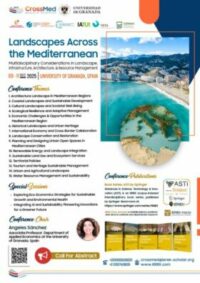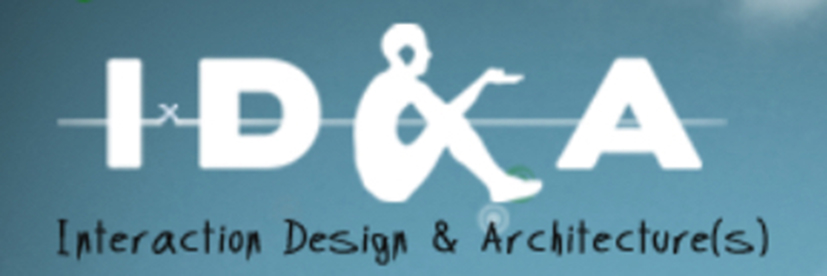ISSN (print): 1826-9745
ISSN (online): 2283-2998
Call of the Journal:
- Collaborative multimedia applications in technology
- Learning and learning ecosystems in the time of Covid-19
- Pedagogical Approaches, Ludic and Co-Design Strategies & Tools supporting Smart Learning Ecosystems and Smart Education
Sep
2020
Nov
2020
As digital technologies are advancing, contemporary interactions within cities are beginning to emerge. These interactions are commonly enabled through sensors to implicitly automate manual processes, such as turning on lights or walking up stairs. However, cities were not necessarily built from the ground up to be smart, rather they are gradually becoming smarter over time as technology becomes more extensible and embedded within them. These digital technologies create information layers that exist over the physical space, resulting in the space being filled with dynamically changing information, thus augmenting the space. Augmented reality (AR) is one such technology that has recently seen a lot of development in this area and is only now starting to become more viable as hardware and computer vision algorithms have caught up. Films such as Minority Report (2002), Ghost in the Shell (2016), and Blade Runner (2017) have predicted AR’s future emergence in public spaces and cities. These films featured AR advertising and information holograms in public spaces, enabled by smart contact lenses and holograms. Currently however, AR has been introduced to public spaces in a number of interesting ways. For instance, Pokemon GO became a global phenomenon which resulted in people physically playing the game in urban spaces and caused ripple effects on the physical spaces people were playing in. Recent work has also shown that AR can have more engaging applications, in areas such as community engagement, personalised digital signage, in-situ visualisations, cultural heritage, and remote collaboration. On a consumer level, AR is most common on smartphones, particularly after the release of ARKit and ARCore – improving the functionality. AR smart glasses are also becoming more accessible and bring with them the possibility of more natural integration of virtual content into our daily lives. For instance, the Microsoft Hololens contains an array of sensor technologies giving it a sense of depth which allows it to place objects naturally in physical space. It has been successfully applied by planners to visualise underlying parts of the city in-situ. While AR is becoming more advanced, accessible, and has demonstrated potential, more knowledge is needed around the key benefits it will bring to cities and how it will change our interactions with the urban environment. Additionally, the use of such technologies raises the question of how the virtual and physical spaces can co-exist – creating an augmented space. Therefore, this focus section builds on from our initial workshops with the goal of bringing together researchers to explore the applications of AR and other immersive technologies, such as Virtual Reality (VR) and Mixed Reality (MR), within the context of enhancing architecture, public spaces and cities.
We welcome research focused on engaging experiences using augmented reality (AR), virtual reality (VR), and mixed reality (MR) within the context of enhancing architecture, public spaces and cities. Specific topics of interest include but are not limited to: Augmenting humans in future cities; Digital heritage and preservation; Speculative designs, design fictions, and art projects; Perspectives from literature; How immersive technologies and applications can be utilised to enhance existing urban infrastructure/technologies (public displays, media facades, buildings, town squares, etc); Remote collaboration; The effect of immersive technologies on culture and behaviour in cities; Smart cities with digital twin technologies.
Augmenting Space | The role of immersive technologies in future cities
As digital technologies are advancing, contemporary interactions within cities are beginning to emerge. These interactions are commonly enabled through sensors to implicitly automate manual processes, such as turning on lights or walking up stairs. However, cities were not necessarily built from the ground up to be smart, rather they are gradually becoming smarter over time as technology becomes more extensible and embedded within them. These digital technologies create information layers that exist over the physical space, resulting in the space being filled with dynamically changing information, thus augmenting the space. Augmented reality (AR) is one such technology that has recently seen a lot of development in this area and is only now starting to become more viable as hardware and computer vision algorithms have caught up. Films such as Minority Report (2002), Ghost in the Shell (2016), and Blade Runner (2017) have predicted AR’s future emergence in public spaces and cities. These films featured AR advertising and information holograms in public spaces, enabled by smart contact lenses and holograms. Currently however, AR has been introduced to public spaces in a number of interesting ways. For instance, Pokemon GO became a global phenomenon which resulted in people physically playing the game in urban spaces and caused ripple effects on the physical spaces people were playing in. Recent work has also shown that AR can have more engaging applications, in areas such as community engagement, personalised digital signage, in-situ visualisations, cultural heritage, and remote collaboration. On a consumer level, AR is most common on smartphones, particularly after the release of ARKit and ARCore – improving the functionality. AR smart glasses are also becoming more accessible and bring with them the possibility of more natural integration of virtual content into our daily lives. For instance, the Microsoft Hololens contains an array of sensor technologies giving it a sense of depth which allows it to place objects naturally in physical space. It has been successfully applied by planners to visualise underlying parts of the city in-situ. While AR is becoming more advanced, accessible, and has demonstrated potential, more knowledge is needed around the key benefits it will bring to cities and how it will change our interactions with the urban environment. Additionally, the use of such technologies raises the question of how the virtual and physical spaces can co-exist – creating an augmented space. Therefore, this focus section builds on from our initial workshops with the goal of bringing together researchers to explore the applications of AR and other immersive technologies, such as Virtual Reality (VR) and Mixed Reality (MR), within the context of enhancing architecture, public spaces and cities.
We welcome research focused on engaging experiences using augmented reality (AR), virtual reality (VR), and mixed reality (MR) within the context of enhancing architecture, public spaces and cities. Specific topics of interest include but are not limited to: Augmenting humans in future cities; Digital heritage and preservation; Speculative designs, design fictions, and art projects; Perspectives from literature; How immersive technologies and applications can be utilised to enhance existing urban infrastructure/technologies (public displays, media facades, buildings, town squares, etc); Remote collaboration; The effect of immersive technologies on culture and behaviour in cities; Smart cities with digital twin technologies.
SCOPUS, Emerging Sources Citation Index – Web of Science , DOAJ, GoogleScholar and DBLP, Norwegian register of scientific journals, series and publishers, Danish Bibliometriske Forskningsindikator (BFI), dblp (computer science bibliography, EdTech Journals.
There is no fee of any kind charged for publishing.
Guest Editors
Callum Parker
Soojeong Yoo
Waldemar Jenek
Youngho Lee










